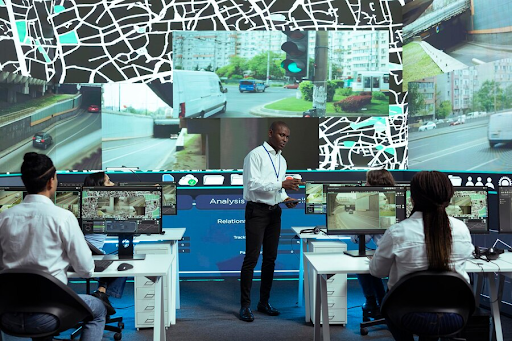How AI is Revolutionizing Surveillance for Integrity Testing
Integrity testing has become increasingly important across various sectors, including corporate environments, legal investigations, and public services. As technology evolves, so do the methods used for surveillance in integrity testing. These advancements have significantly improved the accuracy and efficiency of integrity assessments. This article explores the latest technological advances in surveillance for integrity testing and their impact on ensuring integrity and compliance.
The Evolution of Surveillance Technology in Integrity Testing
Historical Overview
Surveillance technology has come a long way since its inception. Early surveillance methods relied heavily on manual observation and rudimentary recording devices. The introduction of CCTV in the mid-20th century marked a significant step forward, allowing for continuous monitoring and recording of activities. Over the decades, advancements in digital technology have transformed surveillance, making it more sophisticated and less intrusive.
Modern-Day Surveillance Techniques
Today, surveillance technology includes a wide array of tools and techniques. From high-resolution cameras to complex network systems, modern surveillance methods offer unparalleled capabilities. Contemporary surveillance technologies now include AI-driven analytics, biometric systems, and IoT devices, all of which contribute to more effective integrity testing.
Key Technological Advances in Surveillance for Integrity Testing
Artificial Intelligence and Machine Learning
Artificial Intelligence (AI)
and Machine Learning (ML) have revolutionized surveillance. AI can process vast amounts of data quickly and accurately, identifying patterns and anomalies that might go unnoticed by human observers. Machine learning algorithms improve over time, enhancing the accuracy and reliability of integrity testing.
Advanced Video Analytics
Video analytics have taken surveillance to the next level. Intelligent video surveillance systems can analyze video feeds in real time, detecting suspicious activities and alerting authorities immediately. These systems use advanced algorithms to recognize faces, track movements, and even predict potential security breaches.
Biometric Surveillance Systems
Biometric technology, such as facial recognition and fingerprint scanning, has become a crucial component of modern surveillance. These systems offer a high level of accuracy and security, making it easier to verify identities and prevent unauthorized access. Biometric surveillance is particularly useful in high-security environments and for verifying employee integrity.
Internet of Things (IoT) Integration
The integration of the Internet of Things (IoT) has expanded the capabilities of surveillance systems. IoT devices, such as smart cameras and sensors, can communicate with each other, creating a comprehensive surveillance network. This interconnected system allows for seamless monitoring and data collection, enhancing the effectiveness of integrity testing.
Benefits of Technological Advances in Surveillance
Enhanced Accuracy and Reliability
The accuracy and reliability of surveillance have improved significantly with technological advancements. AI and advanced analytics reduce human error, ensuring that integrity tests are precise and dependable. This enhanced accuracy helps organizations maintain high standards of integrity and compliance.
Real-Time Monitoring and Response
Real-time monitoring and response capabilities are a major benefit of modern surveillance technology. Advanced systems can detect and respond to issues instantly, minimizing the risk of integrity breaches. Instant alerts and notifications enable swift action, preventing potential problems from escalating.
Cost-Effectiveness and Efficiency
Technological advancements have also made surveillance more cost-effective and efficient. Automated systems reduce the need for manual monitoring, lowering labor costs. Additionally, the improved accuracy and reliability of these systems minimize the risk of costly errors and integrity breaches.
Challenges and Ethical Considerations
Privacy Concerns
Despite the benefits, surveillance technology raises significant privacy concerns. The ability to monitor individuals constantly can infringe on personal privacy, leading to ethical dilemmas. It is crucial to balance the need for surveillance with respect for privacy, ensuring that monitoring practices are transparent and consensual.
Legal Compliance
Legal compliance is another critical consideration. Surveillance practices must adhere to local, national, and international regulations to avoid legal repercussions. Organizations must stay informed about the latest legal standards and ensure that their surveillance systems comply with all applicable
laws.
Case Studies: Successful Implementation of Advanced Surveillance in Integrity Testing
Case Study 1: Corporate Sector
In the corporate sector, advanced surveillance has proven invaluable for integrity testing. For example, a Sydney-based company implemented
AI-driven video analytics
to monitor employee behavior and ensure compliance with corporate policies. The system successfully identified instances of misconduct, allowing the company to take corrective action swiftly.
Case Study 2: Public Services
In public services, surveillance technology has enhanced integrity testing and accountability. A public transportation agency in Sydney used biometric surveillance to prevent fare evasion and ensure the safety of passengers. The system's accuracy and reliability helped reduce incidents of
fraud
and improve overall service quality.
Conclusion
Technological advancements have significantly impacted the field of surveillance for integrity testing, making it more effective and efficient. AI, advanced video analytics, biometric systems, and IoT integration have transformed how organizations conduct integrity assessments. However, it is crucial to balance these innovations with ethical considerations and legal compliance. By doing so, organizations can leverage the full potential of modern surveillance technology to maintain high standards of integrity and accountability. For those in Sydney, Peakpi offers cutting-edge surveillance solutions that can enhance your integrity testing processes and ensure superior service quality.
FAQs About Technological Advances in Surveillance for Integrity Testing
What are the latest technological advances in surveillance for integrity testing?
The latest advances include AI and machine learning, advanced video analytics, biometric systems, and IoT integration.
How does AI enhance surveillance in integrity testing?
AI enhances surveillance by processing large data sets quickly and accurately, identifying patterns, and detecting anomalies that may indicate integrity breaches.
What are the benefits of using advanced surveillance technology in integrity testing?
The benefits include enhanced accuracy and reliability, real-time monitoring and response, and cost-effectiveness and efficiency.
What ethical considerations are associated with surveillance in integrity testing?
Ethical considerations include privacy concerns and ensuring legal compliance with surveillance regulations.




